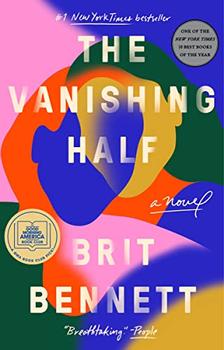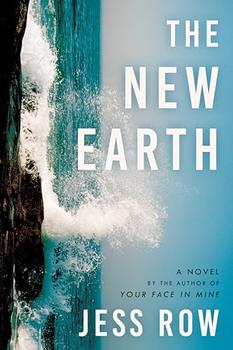Summary | Excerpt | Reading Guide | Reviews | Beyond the book | Read-Alikes | Genres & Themes | Author Bio

A Novel
by Brit BennettBrit Bennett's second novel, The Vanishing Half (after The Mothers, her 2016 bestselling debut), follows Desiree and Stella Vignes, identical twins born in 1938 in Mallard, Louisiana, a town so small it can't even be found on a map. Settled by the girls' ancestors, the town prides itself on its residents being primarily African Americans with very light skin tones (the lighter, the more prized). The girls run away to New Orleans when they turn 16. Desiree returns home 14 years later with her eight-year-old daughter, Jude, whose skin is so dark it's blue-black, touching off a firestorm of gossip and invective that impacts both mother and child. Stella, on the other hand, disappears without a trace, reinventing herself as a white woman with no family and no past. Marrying outside her race she gives birth to Kennedy, a blond, blue-eyed daughter. As Jude and Kennedy reach adulthood, each seeks to establish her place in the world and to uncover the secrets of her mother's past.
The narrative explores many important topics through the lives of these four women. Covering the time period from the World War II era through 1986, the author portrays the changing face of racism in the United States as exhibited not only by whites, but within Black communities as well, with light-skinned Blacks discriminating against those who are darker. Bennett also addresses the themes of family, identity and privilege, and illustrates the evolution of women's rights during this time period. That seems like a lot to tackle within one short novel, and in less-skilled hands the story might have become a slow plod, weighed down by its heavy themes. The author interweaves these subjects and others so skillfully, though, that the narrative soars, and it's only on reflection that one realizes its remarkable depth.
The Vanishing Half is captivating in large part because of the fully-realized characters Bennett has created. The women grow and change over the course of the story as they deal with loves and losses, joys and disappointments; they feel like real-life people we've met, and we grow to care deeply about them. Not only are the four central characters drawn with a fine pen, even minor characters are imbued with complexity, adding to the novel's richness.
The other highlight is the author's vivid writing style. While seldom using colloquialism in her text, she nevertheless captures the lyricism of Southern dialog throughout her prose:
[The residents of Mallard] weren't used to having a dark child amongst them and were surprised by how much it upset them. Each time that girl passed by, no hat or nothing, they were as galled as when Thomas Richard returned from the war, half a leg lighter, and walked around the town with one pant leg pinned back so that everyone could see his loss. If nothing could be done about ugliness, you ought to at least look like you were trying to hide it.
Truisms abound, adding further flavor to the narration; for example, Desiree despises the local boys because "nothing made a boy less exciting than the fact that you were supposed to like him," and "the Mallard boys seemed as familiar and safe as cousins." Later, she doesn't tell her mother about her marriage because, she thinks, "What was the point of sharing good news with someone who couldn't be happy for you?"
My only complaint is that I found the plot overly dependent on coincidence. One accidental meeting over the course of a novel, OK, perhaps; maybe even two such encounters would be acceptable. But there were at least four major turning points that relied on unlikely circumstances, which seemed a bit much. I did enjoy the direction the author took her story, but the repeated reliance on this plot device cast a shadow on an otherwise exceptional work.
Regardless, The Vanishing Half is one of my favorite novels of the year; it's entertaining, fast-moving, has great characters, and Bennett's writing style is absolutely stellar from start to finish. Fans of novels such as Alice Walker's The Color Purple, Kathryn Stockett's The Help, or The Secret Life of Bees by Sue Monk Kidd will almost certainly enjoy this one as well, as will those interested in reading about mother-daughter relationships. The book would also be an ideal choice for book groups.
![]() This review was originally published in The BookBrowse Review in June 2020, and has been updated for the
February 2022 edition.
Click here to go to this issue.
This review was originally published in The BookBrowse Review in June 2020, and has been updated for the
February 2022 edition.
Click here to go to this issue.

If you liked The Vanishing Half, try these:

by Caoilinn Hughes
Published 2025
From the writer Anthony Doerr calls "a massive talent," the story of four brilliant Irish sisters, orphaned in childhood, who scramble to reconnect when the oldest disappears into the Irish countryside.

by Jess Row
Published 2024
A globe-spanning epic novel about a fractured New York family reckoning with the harms of the past and confronting humanity's uncertain future, from award-winning author Jess Row
Fanaticism consists in redoubling your effort when you have forgotten your aim
Click Here to find out who said this, as well as discovering other famous literary quotes!
Your guide toexceptional books
BookBrowse seeks out and recommends the best in contemporary fiction and nonfiction—books that not only engage and entertain but also deepen our understanding of ourselves and the world around us.